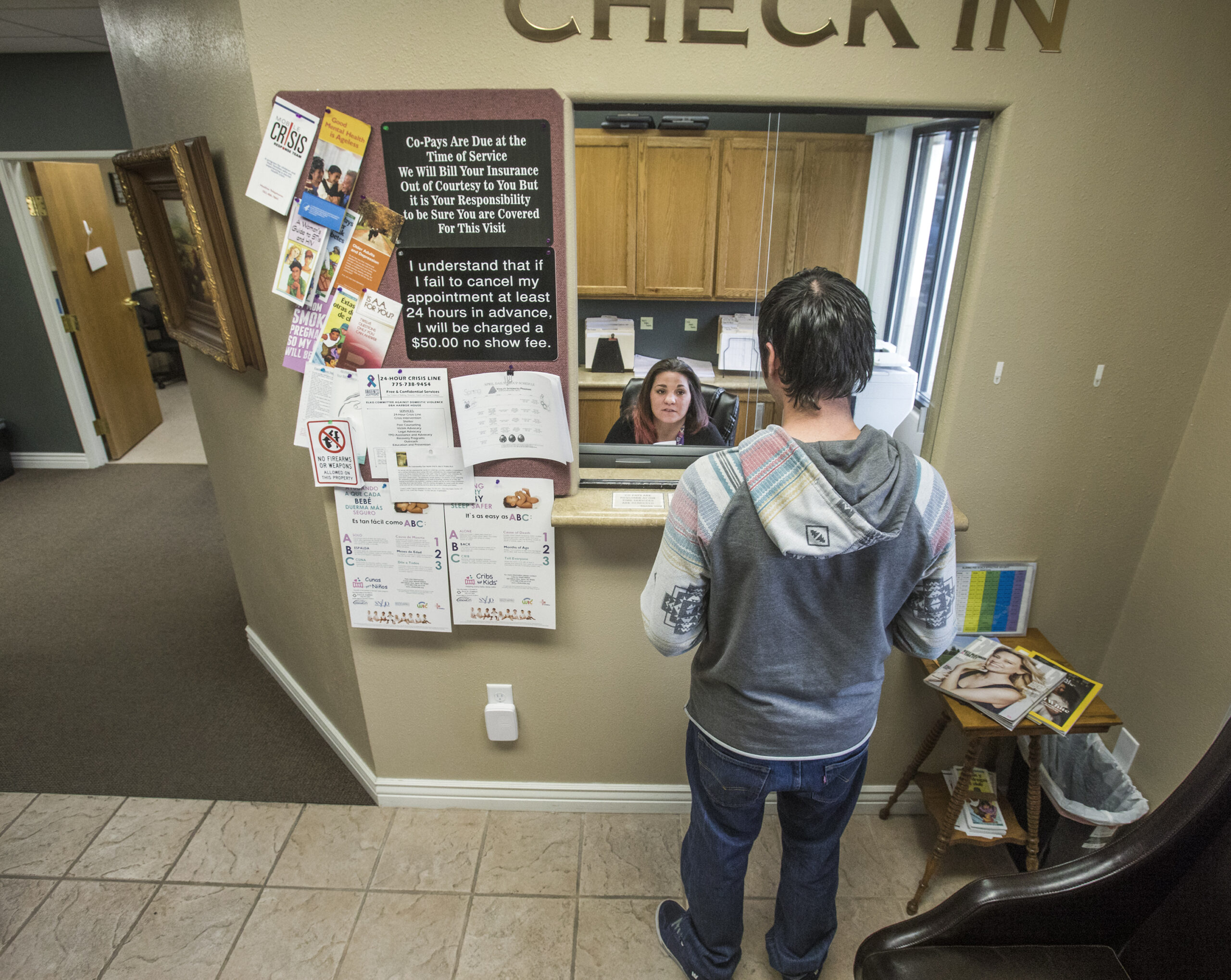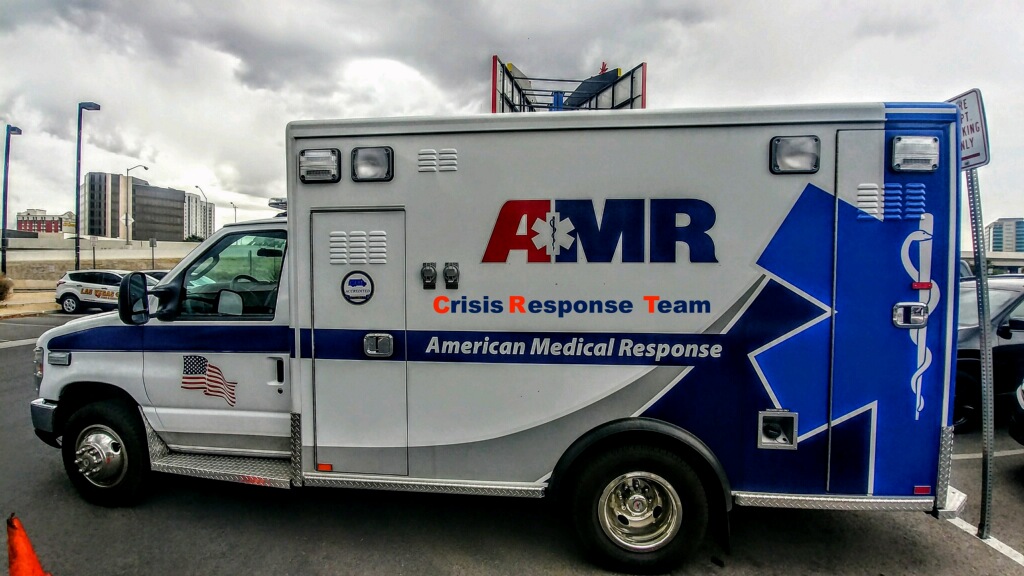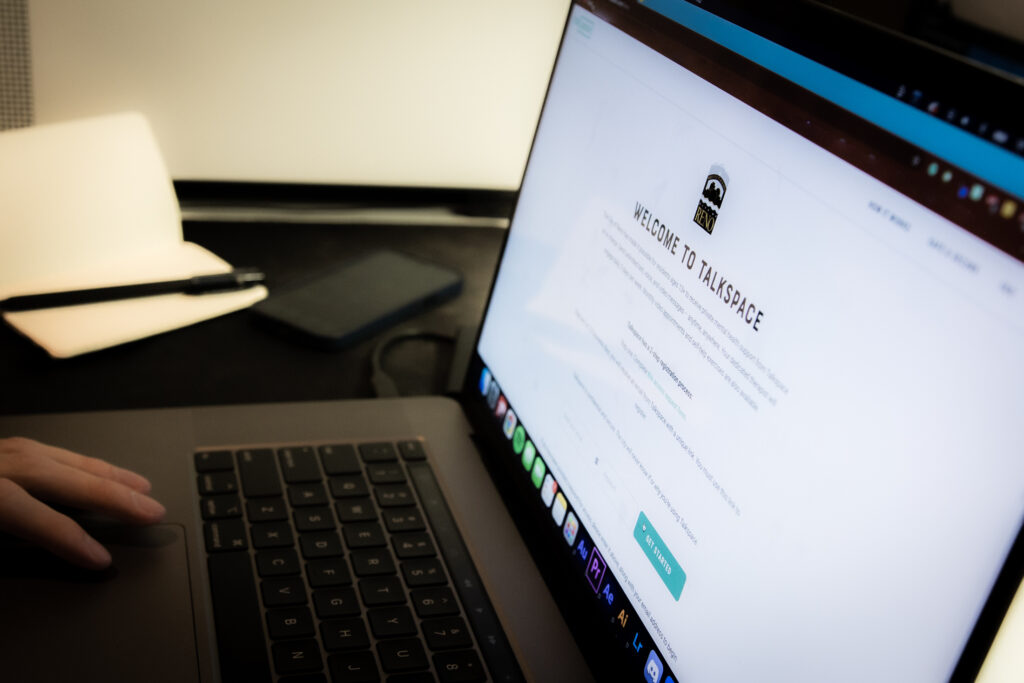Federal COVID aid has given small boost to Nevada’s underfunded mental health services

This story is one in an occasional series exploring how Nevada is spending coronavirus relief funds. For frequently updated information on the federal interventions, check out our federal aid tracker.
While Nevada has long struggled with a widespread lack of mental health resources, the state has recently used more than a million dollars in federal coronavirus aid funds to provide relief to some citizens most at risk from the increased stresses of the pandemic.
The state has funded mental health crisis response teams in both Northern and Southern Nevada, and to combat youth suicide, the state purchased gun and medicine safes, offered training and launched a public relations campaign aimed at prevention.
“More and more, people are now living daily with anxiety and depression because they can't predict what their future is,” said Robin Reedy, executive director for the National Alliance on Mental Illness Nevada, a mental health care advocacy group.
Nevada got national attention for its mental health struggles, after a recent New York Times article highlighted a surge in suicides in the Clark County School District. And while data from the Department of Health and Human Services shows that youth suicides in the state were at a normal level in 2020, with 17 youth suicides last year compared to 16 in 2019, the pandemic has had an undeniable impact on people’s mental health.
Last year, calls to mental health helplines surged, as the Substance Abuse and Mental Health Services Administration’s Disaster Distress Helpline experienced an increase in call volume from 12,000 calls in 2019 to 60,000 in 2020. Call volume from Nevada for the national helpline jumped from 100 calls in 2019 to 400 in 2020, and calls for the Nevada suicide prevention Lifeline increased from 19,000 to 21,000 year over year.
The pandemic has also affected students’ mental health at K-12 schools and Nevada’s colleges. But the state has taken action to combat those challenges.
Using funds received from the Coronavirus Aid, Relief, and Economic Security (CARES) Act, the state dedicated $1.65 million to mental health mitigation and youth suicide prevention. Those funds were distributed through the Division of Public and Behavioral Health, with $445,000 allocated for youth suicide prevention and the other $1.2 million split between Northern and Southern Nevada Adult Mental Health Services to be used as funding for their Mobile Outreach Safety Teams.
Pandemic challenges aside, funding is key to a state in desperate need of help for its mental health services.
Mental Health America, a Virginia-based nonprofit, ranked Nevada last in the country for mental health based on a combination of the state’s prevalence of mental illness, poor access to care and a significant lack of workers in the field. The group also ranked Nevada last for youth mental health in its 2021 report.
“Speaking on the mental health side, I go around saying all the time, ‘we are number 51, we are dead last, and take dead literally.’ When you start talking about pediatric mental health care, I don't know, can you go lower than 51?” said Reedy.
Misty Vaughan Allen, the state’s suicide prevention coordinator, emphasized that there are a lot of details to understand when considering such rankings. Allen said that the access to lethal means, such as firearms, across the state and the ruralness of Nevada are both contributing factors, while Allen, Reedy, and Mental Health America’s rankings all pointed to a lack of resources as one of the biggest challenges.
Other states in the Intermountain West, including Idaho, Colorado and Utah, also rank near the bottom of mental health rankings. And Allen added that perception of mental health is also an important factor.
“Then you have stigma, the culture in this region. Mental health, suicide carry heavy stigma. And so kind of getting those messages of help seeking or help offering can be a challenge,” said Allen.
Youth suicide prevention
To aid youth suicide prevention efforts, the state has used CARES funds on a wide array of programs that included suicide-focused trainings, awareness campaigns and resources for families.
One of those programs was the Reduce Access to Lethal Means Program, which provides safes and locks for firearms and medications to families.
“That is one of the few proven suicide prevention strategies that exists,” Allen said. “And the goal is really to put space and time between that event that might be a young person [thinking] of suicide and the access to something lethal that they might grab… And a large majority of that CARES funding went to reducing access to lethal means.”
With CARES funding, the Office of Suicide Prevention purchased 226 security safes, which are used for medications and firearms, 360 locks, including trigger locks, padlock and gun locks, and 1,696 Deterra bags, which are used for safe, at-home medication disposal. Those resources were distributed to families through various community partners.
The agency has also tried to increase awareness among families about how to keep their homes safe and how to recognize when a young person is struggling with mental health or with thoughts of suicide.
Allen said that messaging went out through social media ads about reducing access to lethal means, and her office created a public service announcement that went out over television and radio, as well as postcards that were sent directly to families. Both the public service announcement and the postcards were distributed in English and Spanish.
The state was also able to purchase a variety of different trainings for families, faith leaders and clinicians using the CARES funds, including an online suicide prevention training called LivingWorks Start, a suicide treatment training for clinicians and other online trainings focused on mental health first aid and youth mental health first aid.
Allen said that more than a thousand people have attended the trainings since the beginning of the pandemic and that the opportunity to administer them virtually has allowed the Office of Suicide Prevention to reach a broader audience.
“I also think mental health support has become more accessible for families, especially in our rural communities, when transportation can be a real challenge or childcare can prevent them from getting the treatment they might want,” Allen said. “So with telemedicine, they can stay at home with their kids or with their therapy pets and get help they need.”
Many people have pushed to get kids back to in-person classes in order to combat some of the negative mental health effects that come with online learning and social isolation.
“When we started to see the uptick in children taking their lives, we knew it wasn’t just the Covid numbers we need to look at anymore,” Clark County Superintendent Jesus Jara told The New York Times. “We have to find a way to put our hands on our kids, to see them, to look at them. They’ve got to start seeing some movement, some hope.”
Clark County School District has plans to bring back pre-kindergarten through third-grade students for in-person instruction starting on March 1, though there are also options for hybrid and full-distance learning, but Reedy cautioned that a return to school would not be a cure-all.
“People want to go back to what they consider normal, and there is a certain comfort in doing that,” she said. “But I do think that … even when they end up going back, mental health and suicide prevention needs to be high up on everyone's awareness because even going back will create stress for a certain segment of people.”
Mobile Outreach Safety Teams
In a continued push to connect Nevadans with mental health resources, the state allocated approximately $1.2 million in CARES Act funds to its Mobile Outreach Safety Teams. Those federal funds were used in place of money from the general fund: $427,386 was administered through Northern Nevada Adult Mental Health Services, and $780,972 was administered through Southern Nevada Adult Mental Health Services.
While there are small differences between the teams’ operations in Northern and Southern Nevada, both have the common goals of stabilizing individuals in crisis and reducing hospitalizations.
“So they assess individuals and provide, especially related to the CARES funding, provide preventative measures, education and resources. And it's to reduce hospitalizations that add a burden at this time to an already surging number affected by the pandemic,” said Jo Malay, deputy administrator for clinical services at the Division of Public and Behavioral Health.
The teams are typically connected to individuals by referrals from law enforcement after a 911 call. The outreach teams also are part of a greater movement across the nation to connect mental health professionals, rather than just police, to people in crisis.

In Southern Nevada, the team is composed of a paramedic and a licensed clinical social worker. The paramedic assesses the medical needs of the individual, while the social worker assesses mental health needs. The team then refers people to the best community resources based on need, such as an outpatient clinic, a crisis counselor or food and housing resources.
In Northern Nevada, clinicians on the team ride along with law enforcement from the Reno Police Department and Sparks Police Department and help provide crisis intervention and mental health evaluations, and they similarly direct individuals to the appropriate community resources and agencies.
Ellen Richardson-Adams, outpatient manager for Southern Nevada Adult Mental Health Services, said the teams also focus on educating individuals about their best options for help during a crisis.
“What else can you do without calling 911? Can you call a crisis hotline? Can we give you the resource or a transportation voucher to a shelter?” she said of their approach.
During the past year, many of the teams’ education efforts have also been focused on the health side of the pandemic. Malay said that the teams have provided individuals with protective equipment and have administered resources on how to prevent the spread of COVID-19.
However, Malay also said she has not seen the use of mental health resources substantially increase during the pandemic. Richardson-Adams agrees: the number of people reached by the teams remained consistent throughout 2020 and was similar to the numbers from the previous year. Last year, the teams served 5,910 people across the state compared with 5,761 in 2019.
With the outreach teams based in high population areas in Northern and Southern Nevada, people living in rural parts of the state are often left with less access to mental health resources. But a shift towards telemedicine has made providing care for those areas easier.
“Rural clinics have always used telehealth. And so, from a system standpoint, that was really helpful because it was established with the stay at home order,” she said. “So it really just reinforced that ability for access in need.”
Moving forward, the outreach teams will return to being funded by the state’s general fund after the CARES dollars are all spent, and Malay said the focus of the teams is still all about access and providing Nevadans with mental health resources where they need it.
Other federal funding efforts
Last year, the state also used CARES Act funding to bolster its 2-1-1 program, which is a hotline that provides information and referrals to health, human and social service organizations.
While the program does not entirely specialized in mental health services, the $184,00 of CARES funding has helped connect more individuals in crisis to community resources, including addiction counseling and suicide prevention.
The state also used federal funds from the Substance Abuse and Mental Health Services Administration to create a warmline for health care workers that is run by the UNLV School of Medicine. The warmline is unlike a hotline, in that it is aimed at providing help before a crisis occurs, rather than during a crisis. Through the warmline, health care workers can receive emotional support, stress management and access to other mental health resources. Since June, the warmline has received 30 calls.
Richardson-Adams said that resources like the 2-1-1 program and warmline have been helpful for her because they contribute to the overall system of care.
“Having that warm person to talk with, and talk through that moment of crisis with them...What we've found is they don't normally need to call back because that emergency, or that moment of crisis, is met,” said Richardson-Adams.
Local governments have also used federal COVID-19 relief funds to improve access to mental health resources.
The city of Reno received approximately $47 million in CARES Act funds, and the city allocated up to $1.3 million of those funds to provide free mental health support for residents.
In December, the city council approved a contract with Talkspace, an online therapy service. The contract allows for any Reno resident aged 13 and up to receive mental health support through Talkspace, including unlimited text, voice and video messages with a therapist and one monthly video appointment.

“People are crying out for help in this moment of crisis as they experience loneliness, anxiety, grief and more,” said Reno Mayor Hillary Schieve in a release. “No one should be denied access to mental health care based on ability to pay and I strongly encourage our city’s residents to take advantage of these free services from Talkspace.”
During a news conference in late January, Dr. Rachel O'Neill, a therapist for Talkspace, said that approximately 1,000 Reno residents were already using the service during the program’s soft launch for city employees and the police department.
Moving forward, Allen said it’s important to ensure that people in crisis know how to get help.
“Access in our state is challenging. But we know we have the tools within our communities, we just have to help people understand their role, what is their role with suicide prevention and help them feel more empowered,” said Allen.
